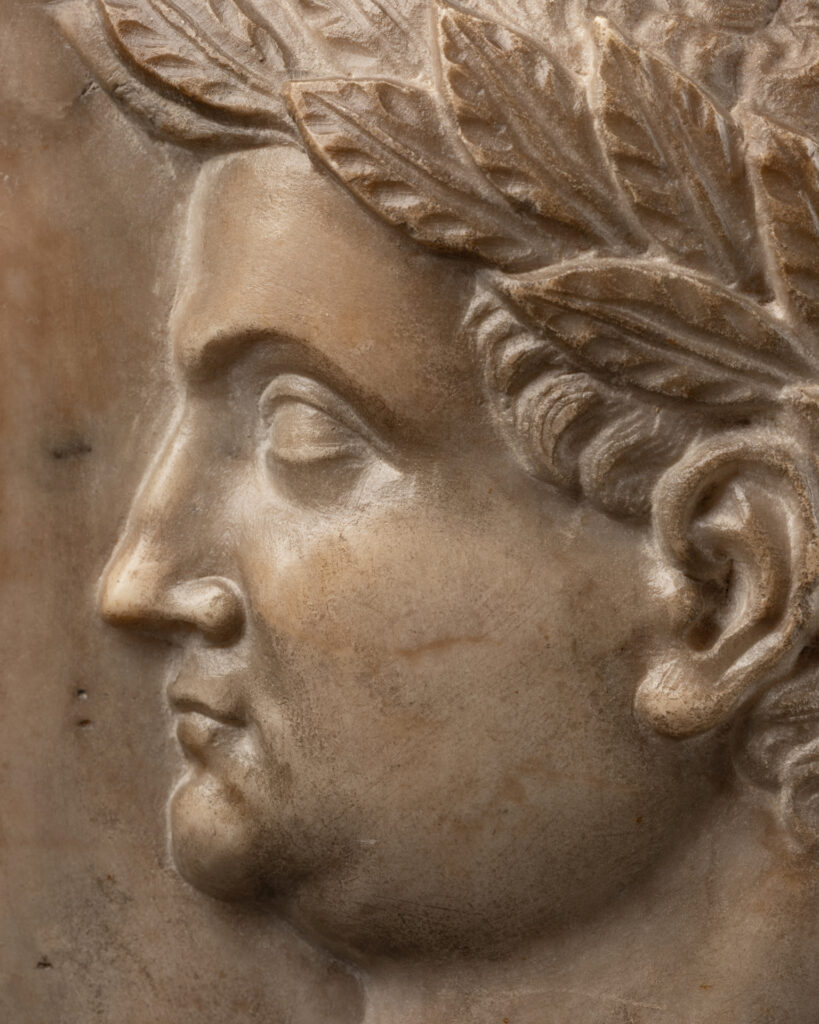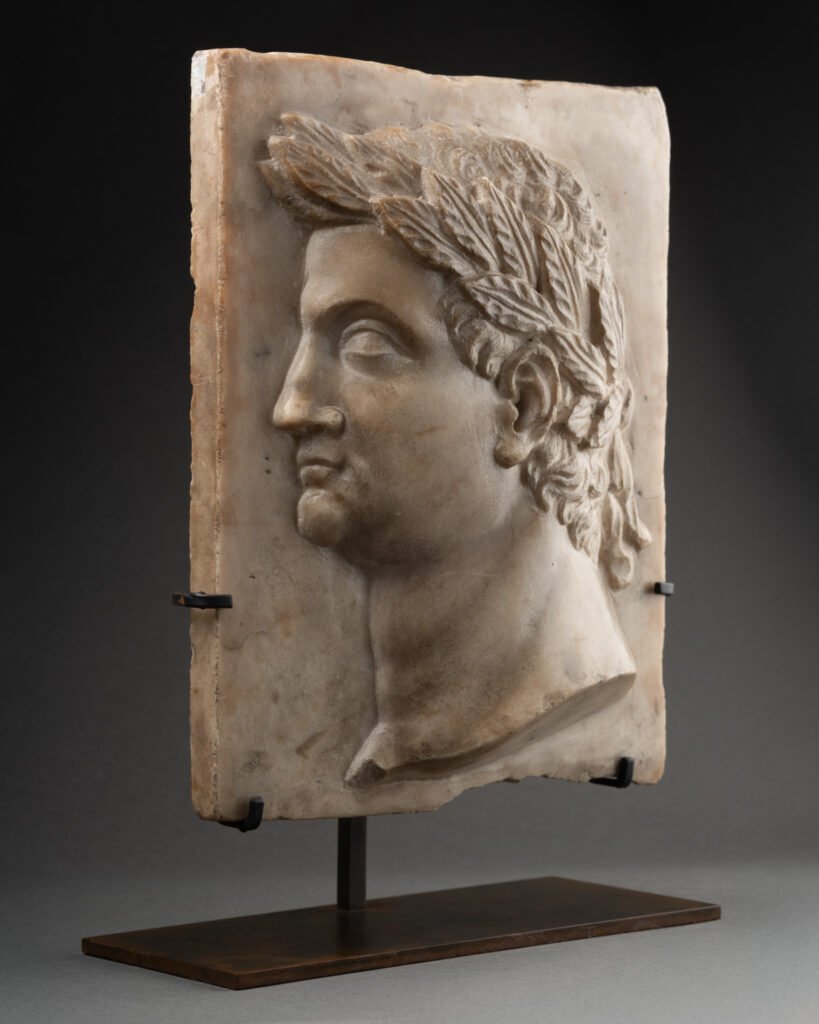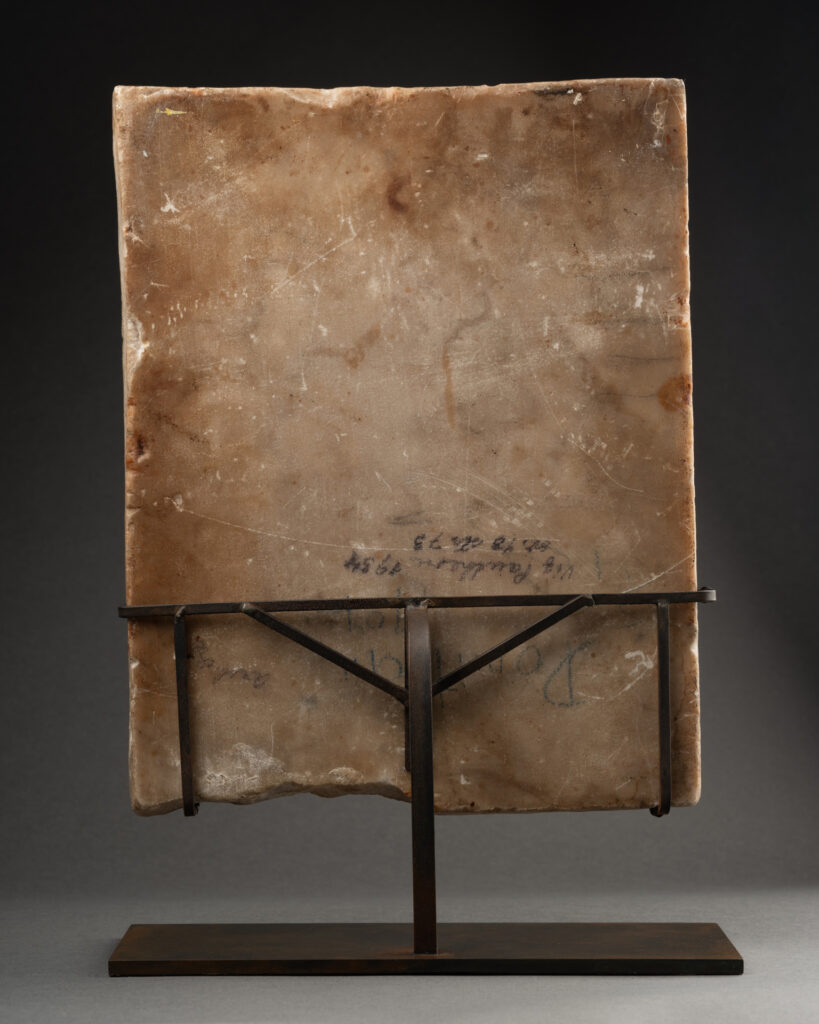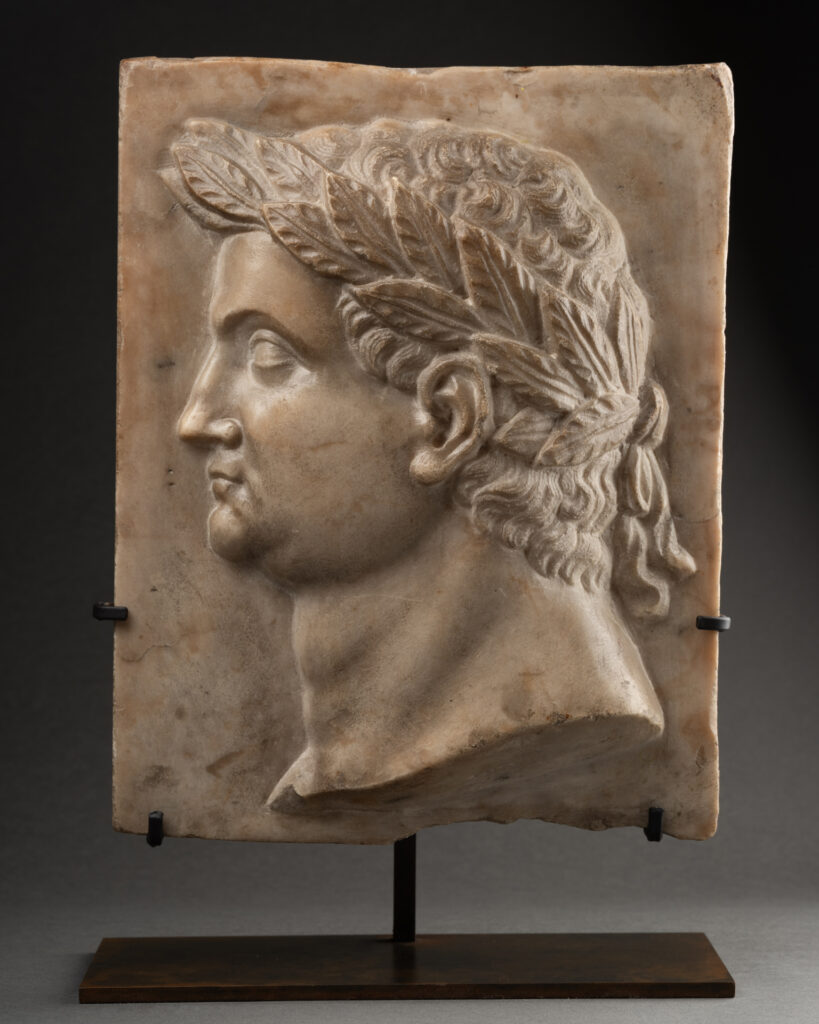This charming marble bas-relief depicts a man in profile, identifiable as the Roman emperor Domitian. He wears a laurel wreath delicately placed on his wavy curls, an important iconographic detail that immediately identifies his imperial status. The laurel wreath is a powerful symbol of the emperor’s military triumphs, but it also evokes immortality, underlining the power and durability of his reign.
Domitian was a Roman emperor who reigned from 81 to 96 BC, one of the “Twelve Caesars”. His reign contributed to Rome’s influence, notably with the construction of numerous temples such as the Capitoline and Jupiter temples, and he was also behind the Capitoline Games, held every four years. A man of letters, he wanted to make Rome a cultural capital.
The emperor presented himself as a god, wearing a purple toga and a golden laurel wreath. The end of his reign was marked by tyranny, persecuting anyone who went against his rule.
He is often depicted in profile, with a laurel wreath attached to the back of his head, and is distinguished from other Roman emperors by his full cheeks, powerful, robust neck and straight nose. This is clearly visible in these examples in the Louvre and Musée des Antiquités in Rouen.
It was during the Renaissance that sculptors fully rediscovered classical art, its forms and naturalism, once again adopting marble as a noble material, in homage to the Greco-Roman heritage. The prevalence of marble is also linked to the disappearance of the original Greek bronzes, many of which were melted down or lost, while the Romans themselves had created numerous marble copies. What’s more, its use made the emperor eternal, guaranteeing him a longevity marked by the transmission of his memory.
Although numerous series of portraits of Roman emperors were produced during this period, this fragment stands out for the exceptional quality of its execution. The firm yet supple modelling lends the sculpture a striking realism, typical of the artistic mastery of the 16th century.




